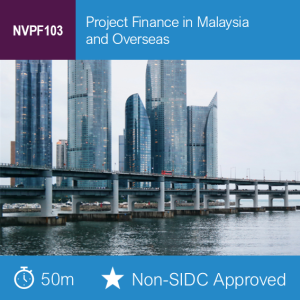Asset Valuation and Credit Review Financial Modelling 12 Jan 2021 (Kuala Lumpur)
RM2,450.00 Original price was: RM2,450.00.RM998.00Current price is: RM998.00.
Description
Course Outline
Section 1: Introduction
Explain human psychology and decision-making + Differentiate artistic feel and scientific method + Describe financial valuation + Outline the methods used for businesses, properties and financial assets + Contrast equity value and enterprise value + Explain the relationship between credit review and valuation
Section 2: Impact of economic conditions on asset valuation and credit-worthiness and on capital market performance
Discuss the effect of economic conditions on valuation and credit-worthiness + Differentiate technical analysis and fundamental analysis + Explain analytical tools including PEST, Porter’s five forces, SWOT analysis and Black Swan + Perform a case study on EON Capital-Hong Leong + Compare valuation fundamental analyses with credit review + Summarise the effect of valuations and credit review on the performance of equity and debt markets
Section 3: Cost Method
Outline the sources of information on cost + Perform a cost analysis + Prepare the financial model to sum up the parts that make up the whole of the business, property or financial asset + Explain the benefits and disadvantages of the cost method
Section 4: Comparison Method
Perform a selection of peers + Analyse precedent transactions + Explain the use of valuation multiples + Compute the Enterprise Value (EV) + Perform the computations for EV-revenue, EV-EBITDA, EV-capital employed, EV-free cash flow, Price-Earnings (PE) ratio, Price-Book (PB) ratio, Price-cashflow ratio and Net Tangible Asset (NTA) + Outline industry specific measures + Explain the benefits and disadvantages of the comparison method
Section 5: Income Method – Part 1
Describe the residual method + Contrast the earnings multiple method and the Discounted Cashflows (DCF) method + Determine the sources of assumptions + Identify trends and compute projections + Perform a conversion from the indirect cash flow statement method to the direct cash flow statement method + Calculate the free cash flows (FCF) + Determine the amounts for financing, repayment and refinancing + Compute the terminal value
Section 6: Income Method – Part 2
Explain the discount rate + Calculate the Weighted Average Cost of Capital (WACC), cost of equity and cost of debt + Compute the Net Present Value (NPV) + Calculate the Internal Rate of Return (IRR) + Perform stress testing for credit review + Explain the benefits and disadvantages of the income method
Section 7: Summary
Compare and contrast the valuation methods + Perform case studies
You must be logged in to post a review.
Related products
-
Sale!
Financial Modelling Essentials for Project Finance 12 March 2020 (Johor Bahru, Johor)
RM1,750.00Original price was: RM1,750.00.RM868.00Current price is: RM868.00. -
Sale!
Financial Modelling Essentials for Project Finance 23 January 2020 (Shah Alam, Selangor)
RM1,750.00Original price was: RM1,750.00.RM868.00Current price is: RM868.00. -
-
Sale!
Complete Financial Modelling with Automated Sukuk (Bonds) Tranching 30 Jan 2020 (Kuala Lumpur)
RM2,150.00Original price was: RM2,150.00.RM998.00Current price is: RM998.00.




Reviews
There are no reviews yet.